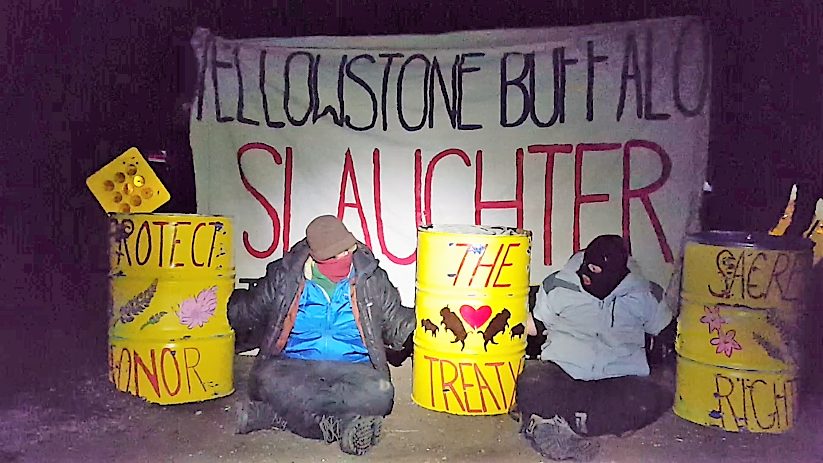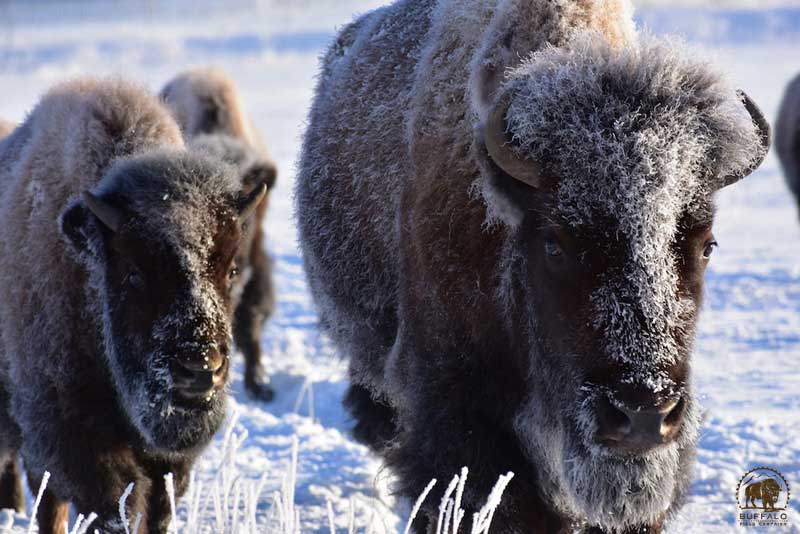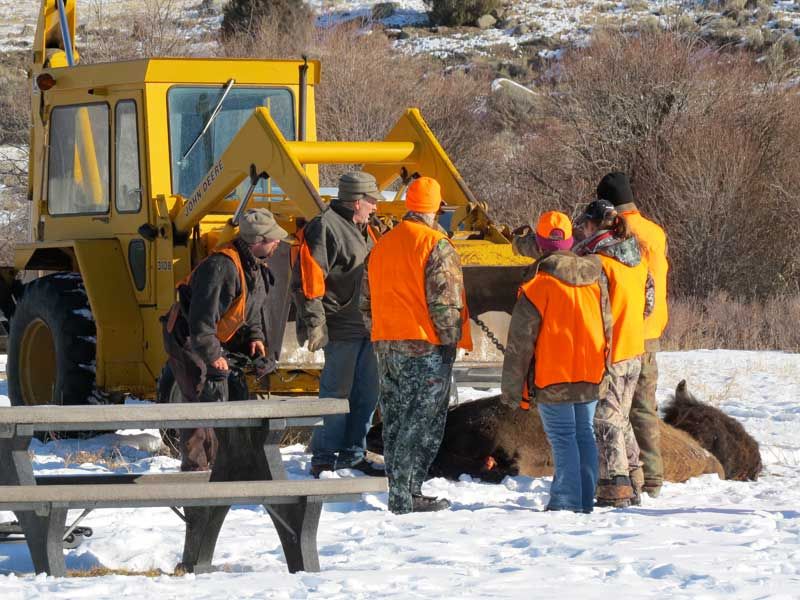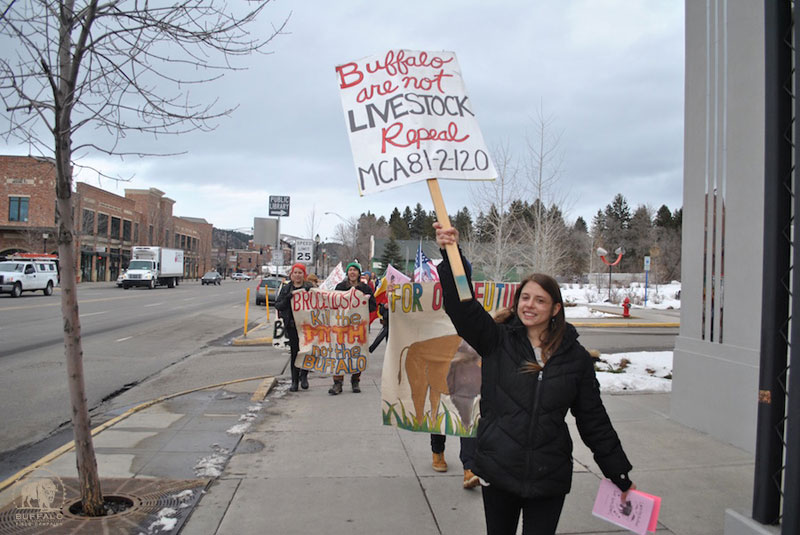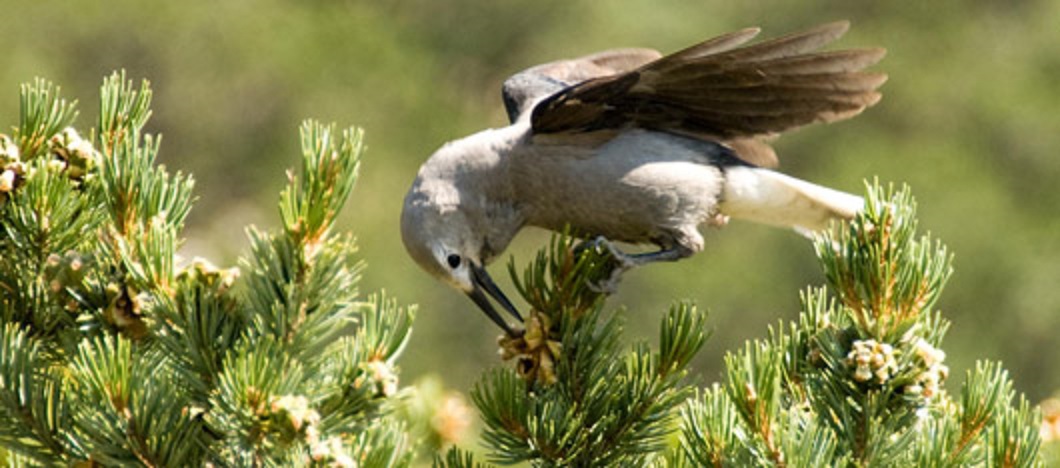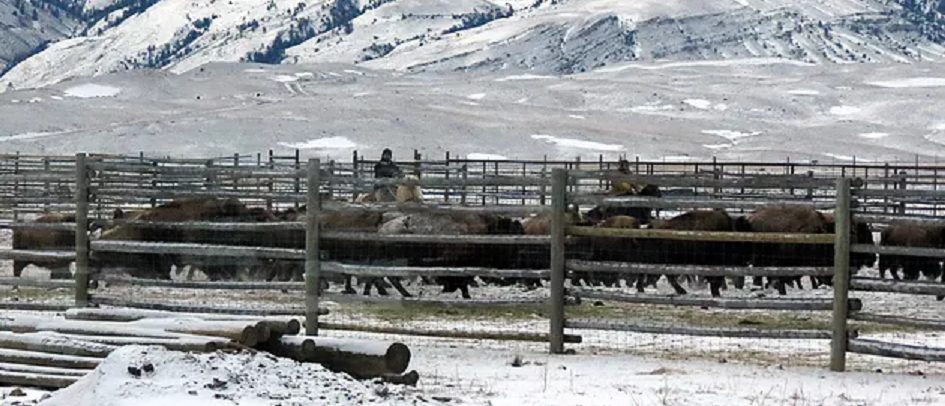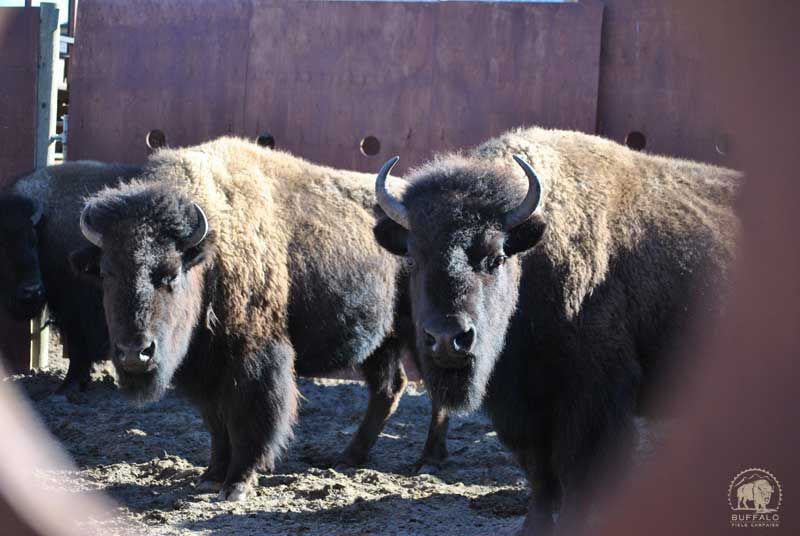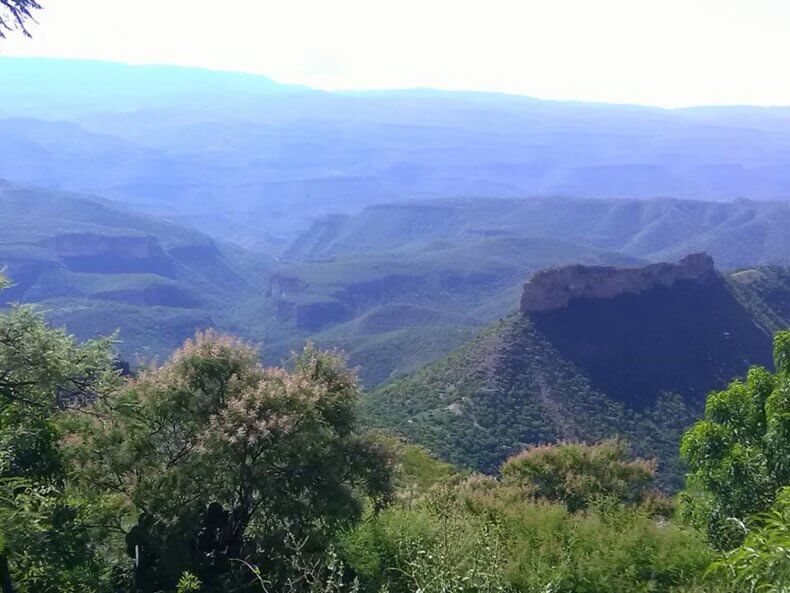Featured image: A single mom with seven calves who she is caring for. More than likely, only one of these calves are hers, and the rest of these babies are buffalo she adopted after their mothers were killed by hunters. BFC photo by Stephany Seay. by Stephanie Seay / Buffalo Field Campaign
It’s just below zero as we trek through freshly fallen snow on an unusually windless early morning, in the high hills above the Gardiner Basin. Taking advantage of the calm air that won’t rock our scopes and cameras, our patrol is on the way to a lookout spot high above Yellowstone’s Stephens Creek buffalo trap. The trap is miles away. The spot we’re at is one of the few places that we can see even a far-away glimpse into the industrial size monstrosity that has entrapped more than 450 of the gentle giants in the past couple of weeks. Yellowstone initiates a massive seven-mile public closure around their trap, obviously wanting to hide the horrible things they are doing to this sacred species, our national mammal. On our way to the lookout, our footsteps squeaking through the freezing cold snow, one of our crew shouts out, “wolves!” We all stop dead in our tracks. To the south of us, we can hear them, the beautiful, haunting serenade of a wolf pack, singing blessing songs to the morning, or, more like mourning songs to the travesty unfolding before us. The wolves know. We get to the lookout spot and it’s as bad as we thought: hundreds of buffalo in the trap, huddled together, eating hay rations, trapped on death row. Four park wranglers on horseback, and a white SUV are coming into the northernmost paddock of the trap which holds approximately 60 of the country’s last wild buffalo. This paddock is the veritable end of the line before the buffalo go in even deeper, to places they will never return from.
...
